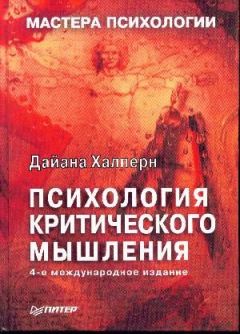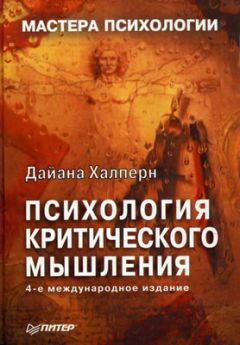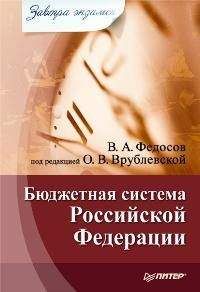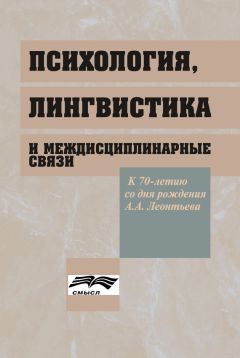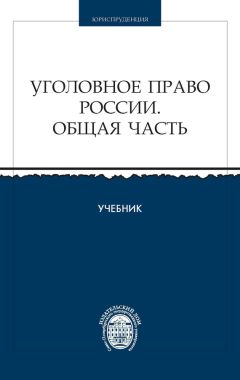Дайана Халперн - Психология критического мышления
Подвижность идей. Характеризуется выработкой при решении задач большого количества идей.
Связывающий алгоритм. Этот метод выработки творческих решений основывается на изменении связей между объектами с помощью связующих слов - таких как «на», «между», «под» и «через».
Список свойств. При этом методе выработки творческого решения каждая характеристика или качество объекта или ситуации записывается, а затем исследуется на возможность модификации или перекомбинирования.
Синергия. Соединяет кажущиеся несопоставимыми части в полезное и действующее целое. Такие сочетания часто используются в творческом мышлении.
Творчество (креативность). Создание чего-то оригинального и полезного. Чувствительность. Восприимчивость к информации, получаемой через органы чувств; «подмечает» стимулы, важные для принятия творческого решения.
Глава 11. Слово в заключение
Думать - это как любить и умирать.
Каждый должен делать это сам.
Неизвестный автор
Эта глава может понравиться вам больше всего, потому что в ней практически ничего не сказано. Прочитав эту книгу, вы приобрели знания, которые должны помочь вам лучше мыслить. В каждой главе рассматривался только один тип мышления. Это было необходимо по той причине, что большой объем информации нужно было разбить на более удобные для восприятия части. К сожалению, само мышление не разбивается на аккуратные отдельные категории, и в большинстве ситуаций приходится применять смежные навыки. Нужно постоянно обращаться к памяти и помнить о том, что от того, какие мы используем слова и образы, по сути и зависит то, как мы думаем. Не забывайте о логике. Те методы, которым вы научились, можно использовать на протяжении всей жизни. Но самое важное: мыслите критически. Вы должны обнаруживать проблемы, упущенные другими, поддерживать заключения, опирающиеся на весомые доказательства, и настойчиво работать. Надеюсь, что это книга поможет вам лучше мыслить.
Пришло время оглянуться назад и вспомнить определение критического мышления, данное в первой главе, а также широкие понятия информации и стратегий в последующих главах. Мне кажется, найдено очень верное и емкое определение, в котором подчеркнуто, что под критическим мышлением подразумевается комплекс различных качеств. Сможете ли вы использовать полученную информацию? Как по-вашему, после чтения этой книги вы с большим успехом будете добиваться желаемого? Стали ли вы мыслить более критически?
Будет полезно, если вы постараетесь отобрать и свести вместе те навыки, которые вы используете, когда сталкиваетесь с задачей. Работая над задачей, попытайтесь составить для себя полезную памятку. В произвольной форме, как вам удобно. Работайте над своим мышлением, стремитесь к самосовершенствованию. Рассуждайте мудро. От этого зависит ваше будущее.
Список литературы
Adams A., Camine D., Gersten /?. (1982). Instructional strategies for studying content area texts in the intermediate grades. Reading Research Quarterly, 18,27-55.
Adams J. L. (1979). Conceptual blockbusting: A guide to better ideas (2nd ed.). New York: Norton.
Adams J. L. (1986). The care and feeding of ideas: A guide to encourage creativity. Reading, MA: Addi-son-Wesley.
AdlerR. В., Rosenfeld L. В., Towne N. (1980) Interplay: The process of interpersonal communication. New York: Holt, Rinehart amp; Winston. Alcock J. E. (1981). Parapsychology: Science or magic? Oxford, England: Pergamon» Allegretti C. L, Frederick J. N. (1995). A model for thinking critically about ethical issues. In D. F. Halpern amp; S. G. Nummedal (Eds.), Psychologists teach critical thinking [Special issue]. Teaching of Psychology, 22,46-18.
Allport G. W. (1954). The nature a/prejudice. Cambridge, MA: Addison-Wesley
Amabile 7 M. (1983). The social psychology of creativity. New York: Springer-Verlag. Amabile Т. М. (1989). Crowing up creative: Nurturing
a lifetime of creativity. New York: Crown. American Association of Medical Colleges. (1984). Report of the working group on fundamental skills. Journal of Medical Education, 59, 1. American Psychiatric Association. (1994). Diagnostic and statistical manual of mental disorders (4th ed.).Washington, DC: Author.
American Psychological Association. (1992). Learner-centered psychological principles: Guidelines for school redesign and reform [Draft]. The Psychology Teacher Network, 2, 5-12.
Anderson B. F. (1980). The complete thinker. A handbook of techniques for creative and critical problem solving. Englewood Cliffs, NJ: Prentice-Hall. Arasteh A. R., Arasteh J. D. (1976). Creativity in human development. New York: Schenkman. Arkes H. R., Hammond, K. R. (Eds.). (1986a). Judgment and decision making: An interdisciplinary reader. Cambridge, MA: Cambridge University Press. Arkes H. R., Hammond, K. R. (1986b). Law. In H. R. Arkes amp; K. R. Hammond (Eds.), judgment and decision making: An interdisciplinary reader (pp. 211 - 212). Cambridge, MA: Cambridge University Press. Arnheim R. (1971). Visual thinking. Berkeley: University of California Press. Asimov 1. (1989, March 31). Combating US scientific
illiteracy. Los Angeles Times, Part V, p. 8. Atkinson R. С(1975). Mnernotechnics in second-language learning. American Psychologist, 30, 821 - 828. Baddeley A. D. (1986). Working memory. London:
Oxford University Press.
Baddeley A. D. (1992). Working memory. Science, 255, 556-559.
Baer J. (1993). Creativity and divergent thinking. Hills-dale, NJ: Lawrence Erlbaum Associates. Bailin S. (1987). Creativity and skill. In D. N. Perkins, J. Lochhead, amp; J. Bishop (Eds.), Thinking: The second international conference (pp. 323-332). Hills-dale, NJ: Lawrence Erlbaum Associates. Baron J. (1987). An hypothesis about the training of intelligence. In D. N. Perkins, J. Lochhead, amp; J. Bishop (Eds.), Thinking: The second internal conference (pp. 60-67). Hillsdale, NJ: Lawrence Erlbaum Associates. Baron J. (1988). Thinking and deciding. New York:
Cambridge University Press.
Baron J. (1990). Harmful heuristics and the improvement of thinking. In D. Kuhn (Ed.). Developmental perspectives on teaching and learning thinking skills (pp. 28-47). New York. Basel, Karger. Baron. J., Brown. R. V. (Eds.). (1991). Teaching decision making to adolescents. Hillsdale, NJ: Lawrence Erlbaum Associates.
Baron J. В., Sternberg R. J. (Eds.) (1987). Teaching thinking skills: Theory and practice. New York Freeman.
Barron, F. (1958). The psychology of imagination. Scientific American, 199,151-166. Bartlett F. С(1932). Remembering: A study In experimental and social psychology. Cambridge, England: Cambridge University Press. Bartlett J. (1980). Familiar quotations (15th and 125th
anniversary eds.). Boston: Little, Brown. Bartlett J. (1992) Familiar quotations. (17th ed.). Boston: Little, Brown.
Bauer M. /., Johnson-Laird P. N. (1993). How diagrams can improve reasoning. Psychological Science, 4, 372-378.
Begley S. (1993, June 28). The puzzle of genius. Newsweek, pp. 46-49.
Beilensen J., Jackson H. (Eds.). (1992). Voices of struggle, voices of pride. White Plains. NY: Peter Pauper Press, Inc. Bell R., Caplans, J. (1976). Decisions, decisions: Game
theory and you. New York; Norton. BergerD. (1994). Critical thinking. Paper presented at Loma Linda Medical Center. Available from author at Claremont Graduate School, Claremont, CA. Berger, D. (1995). Errors in judgments and decisions: Understanding our cognitive fallibilities. In P. Foster (Ed.), Critical Thinking: Views and values in college teaching (pp. 48-68). Riverside, CA: La Sierra University Press.
Berkowitz L., Thome P. R. (1987). Pain expectation, negative affect, and angry aggression. Motivation and Emotion, 11, 183-193.
Berlin В., Kay P. (1969). Basic color terms: Their universality and evolution. Berkeley: University of California Press.
Berliner И. J. (1977). Some necessary conditions for a master chess program. In P. N. Johnson-Laird amp; P.
С. Wason (Eds.), Thinking: Readings in cognitive science. Cambridge, England: Cambridge University Press.
Bernstein D. A. (1995). A negotiation model for teaching critical thinking. In D. F. Halpern amp; S. G. Nummedal (Eds.), Psychologists teach critical thinking. [Special Issue]. Teaching of Psychology, 22, 22-24.
Beyth-Marom R, Dekel S., Gombo R., amp; Shaked M. (1985). An elementary approach to thinking under uncertainty. Hillsdale, NJ: Lawrence Erlbaum Associates.
Block RA. (1985). Education and thinking skills reconsidered. American Psychologist, 40, 574-575.
Bloom B. S., Broder, L. J. (1950). Problem solving processes of college students. Chicago: The University of Chicago Press.
Boden M. A. (1990). The creative mind: Myths amp; mechanisms. New York: Basic Books.
Boring E. G. (1932). Intelligence as the tests test it. New Republic, 35, 35-37.
Bousfield, W. A. (1953) The occurrence of clustering in the recall of randomly arranged associates. Journal of General Psychology. 49, 229-240.
Bower G. H. (1970). Organizational factors in memory. Cognitive Psychology, 1, 18-46.
Bower G. H. (1972). Mental imagery and associative learning. In L. Gregg (Ed.), Cognition in learning and memory. New York; Wiley.
Bower G. (1994, May 25). Electronic communication from Marina Volkov at the Federation of Behavioral, Psychological, and Cognitive Sciences, [email protected]
Bower G. H., Cirilo R. K. (1985). Cognitive psychology and text processing. In Handbook of Discourse Analysis, (Vol. 1, pp. 71-105). New York: Academic Press.
Bower G. H., Clapper, J. P. (1989). Experimental methods in cognitive science. In M. I. Posner (Ed.), Foundations of cognitive science (pp. 245-301). Cambridge, MA MIT Press.
Bower G. H., Clark M. C. (1969). Narrative stones as mediators for serial learning. Psychonomic Science, 14,181-182.
Boxall B. (1993, October 12). Statistics and science can be twisted to suit debate. The Los Angeles Times, p. A18.
Bozzell L В., III. (1993, July 21). Exposing statistical myths. The Washington Times, p. 64.
Bradbury R. (1950). Fahrenheit 451. New York: Simon amp; Schuster.
Braine M. D. S. (1978). On the relation between the natural logic-of reasoning and standard logic. Psychological Review, 85,1-21.
Brans ford D. (1979). Human cognition: Learning, understanding and remembering. Belmont, CA: Wad-sworth.
Bransford J. D., Arbitman-Smith /?., Stein, B. S., Vye N.J. (1985). Improving thinking and learning skills: An analysis of three approaches. In J. W. Segal amp; S. F. Chipman (Eds.), Thinking and learning skills:
Volume 1. Relating instruction to research (pp. 133-206). Hillsdale, NJ: Lawrence Erlbaum Associates.
Bransford J. D., Johnson M. K. (1972). Contextual prerequisites for understanding: Some investigations of comprehension and recall. Journal of Verbal learning and Verbal Behavior, 11, 717-726.
Bransford J. D., Sherwood /?., Vye N., RieserJ. (1986). Teaching thinking and problem solving: Research foundations. American Psychologist, 41, 1078- 1089.
